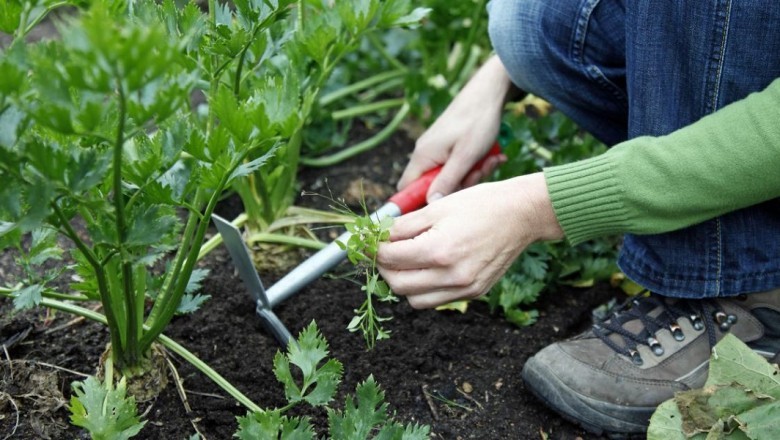
"Say Goodbye to Weeds! Simple and Practical Tricks for Weed Removal"
Unkraut entfernen? Mit diesen Tricks dauert es nicht mehr lange – super praktisch!Weed Removal Without Chemicals
Mechanical methods such as using tools like a hoe, weed digger, or crack scraper are effective for removing weeds. Heat can also be effective: simply pass a thermal device over the weeds or pour boiling water on them. The result: the weeds wither and can be easily removed. Additionally, fertilizing can help combat weeds in the lawn.
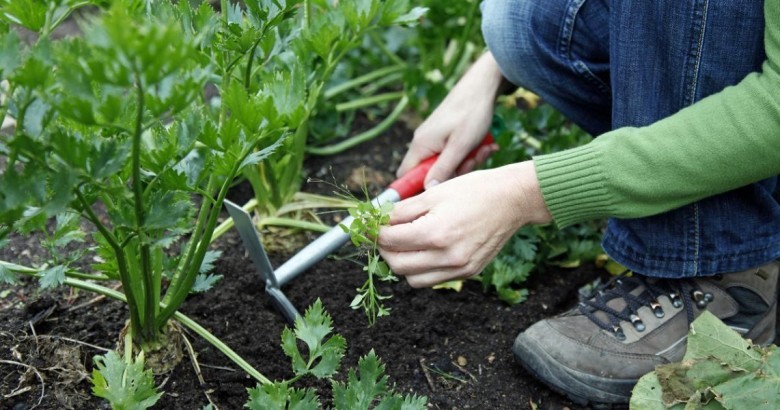
Weed is essentially just a plant growing in the wrong place at the wrong time. Despite this, many find it annoying because it seems indestructible, spreads everywhere, and can even withstand hot weather like a resilient survivor.
Types of Weeds
Weeds with taproots: For weeds with taproots like horsetail, buttercup, nettle, dandelion, thistle, curled dock, Japanese knotweed, couch grass, and bindweed, it's important to dig them out completely, ensuring the root is entirely removed. Weeds with taproots can be challenging to eradicate as they are persistent and not easily defeated.
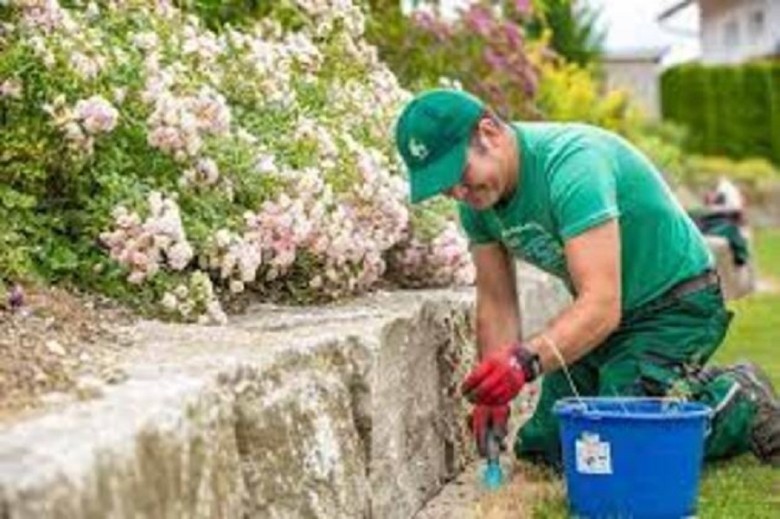
Seed weeds: Seed weeds are typically annuals that grow rapidly and spread numerous seeds through the wind, which can remain viable in the soil for a long time. The good news is that seed weeds are easier to pull out.
Weed Prevention
While it's impossible to completely prevent weeds, you can make it more difficult for them to thrive. Areas with exposed soil are particularly prone to weed growth as they provide perfect landing spots for weed seeds. But is covering them up enough? Well, not quite. A thick layer of mulch offers some protection but not a long-lasting solution.

Mulch films are durable but may not be practical everywhere. They work well under pathways and gravel beds, especially against taproot weeds. However, when used in garden beds, they still allow weed seeds to germinate despite being covered with soil, and they can interfere with watering, fertilizing, and soil cultivation. A layer of loose mulch in garden beds provides short-term success but won't prevent the growth of deeply rooted weeds. However, sprouting weeds can be easily pulled out from loose mulch.
Clean Terrace Tiles in No Time
Weeds don't just grow in gardens; they can also infest terrace tiles. Before we move back to the garden, let us show you an easy way to clean terrace tiles. With this mixture, you can quickly get rid of weeds between terrace tiles in just a few minutes. Here's how it works:
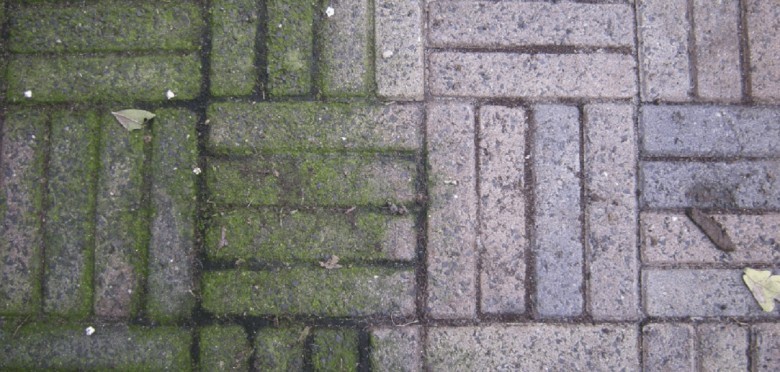
- Dissolve 5 tablespoons of green soap and 5 tablespoons of baking soda in a large bucket filled with 10 liters of hot water.
- Pour the mixture evenly over the entire terrace and scrub the tiles with a stiff brush.
- Let it sit for about 10 minutes, then rinse everything with water.
Voila! Enjoy a weed-free view without the need for excessive effort and constant scraping! Note: Local pesticide regulations may apply and should be considered. Please check the regulations in your area before starting the task.
Tool: Hoe and Cultivator
Now let's focus on the garden! Cultivators resemble mini plows used by farmers and are used to loosen the top layer of soil - making it easy to collect the weeds afterward. Hoes, on the other hand, have sharp blades that cut weeds just below the surface of the soil or also loosen the top layers and extract weeds from the ground. These tools are available with long handles or as handheld hoes.
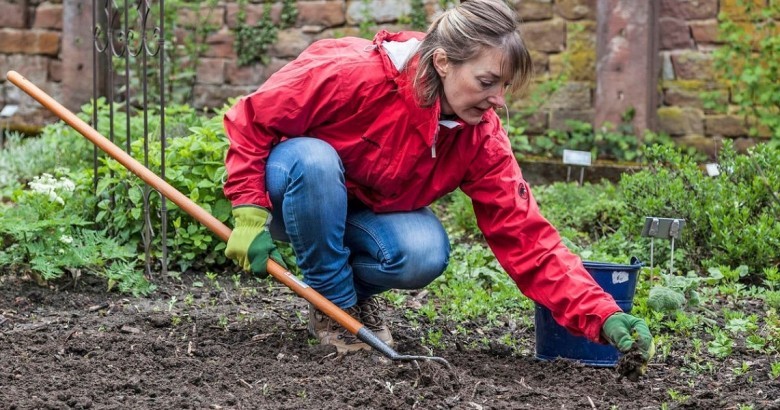
During dry weather, you can let the weeds lie and dry out before disposing of them, or they can be placed in the compost bin. Narrow hoes have proven effective in perennial beds and can be found in stores under the name "planting hand hoes" - these can tackle weeds even between closely spaced perennials.
Mechanical Removal
Cultivating and hoeing are effective only against seed weeds and young taproot weeds. If you use a hoe against mature taproot weeds, you might unintentionally propagate them by dividing the remaining rhizome pieces, leaving small fragments in the soil. To effectively remove taproot weeds, you will need to dig a bit deeper and pull them out along with their roots.
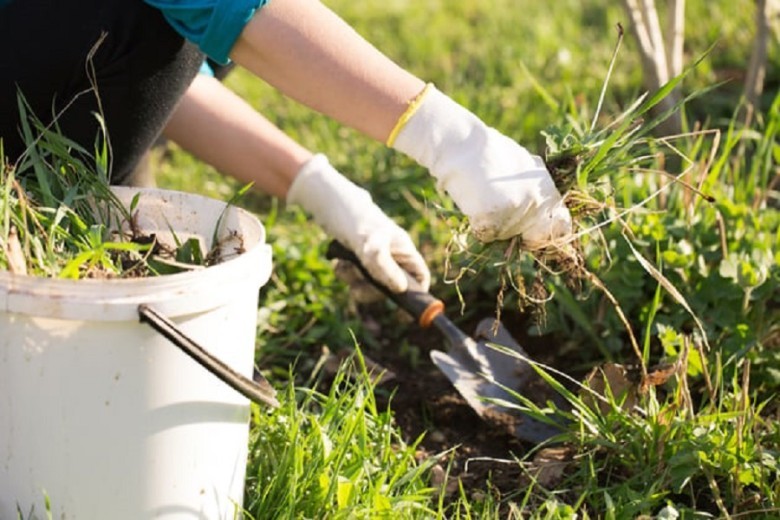
Tip: Regular cultivating or hoeing not only makes life difficult for weeds, but it also saves you from watering every second or third time. The hoes sever fine capillary tubes in the soil that otherwise transport water from deeper layers to the surface, where it evaporates unused.
Dealing with Stubborn Weeds
Aegopodium podagraria, commonly known as ground elder or goutweed, is one of the most troublesome weeds. Its roots run through the ground like a tangled ball of yarn, entangling with the roots of other plants, and any small fragment has the ability to regrow. Simply pulling it out won't work; the weed will just regrow.

In perennial beds, ground elder can be particularly troublesome when it infiltrates between the plants and becomes seemingly inseparable from them. The only solution is to dig it out: loosen the soil with a garden fork to a spade's depth, shake the soil off the fork's tines, and collect all the ground elder rhizomes. In the autumn, dig up perennials and carefully remove any ground elder from their roots.
Weed Diggers
Weed diggers are familiar tools that many of us remember from childhood. When helping with gardening tasks, the first step often involves sorting out unwanted plants. Weed diggers have long tines or blades that penetrate deep into the soil and effectively remove plants like dandelions.

With tools that have long handles, you won't even need to bend down. This convenient and efficient method works best for weeds with rosette leaves but is ineffective against taproot weeds.
Crack Scrapers
These tools remove weeds from the gaps between pavement stones using narrow blades or sturdy wire brushes. Crack scrapers are also available with long handles, making it possible to do the work while standing.
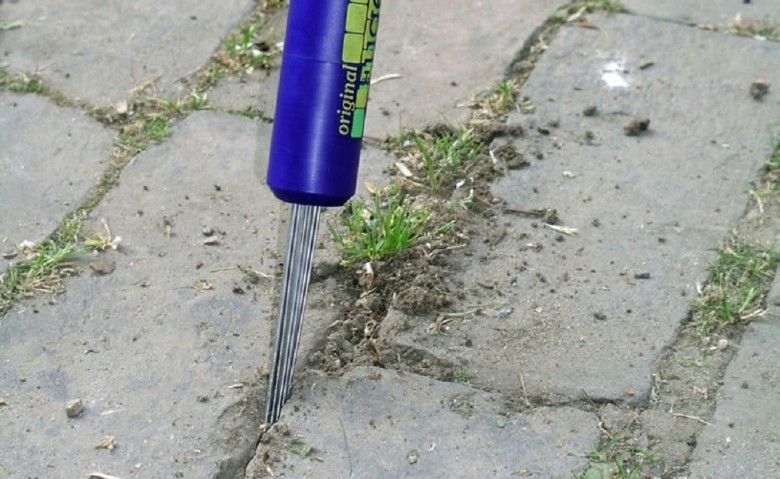
A crack scraper can be used in combination with a weed killer or a soap solution to soften the weeds and make removal easier. As mentioned earlier, a mixture of soap can be helpful in loosening the weeds, and a crack scraper will finish the job!
Weed Control with Heat
Whether using gas or a 230-volt power source, thermal devices are slowly passed over the weeds, exposing them to temperatures of up to 1,000 degrees Celsius, which eliminates their cellular structure. The weeds wither away. However, the heat shock does not reach the roots, which results in the plants often regrowing after one to two weeks.
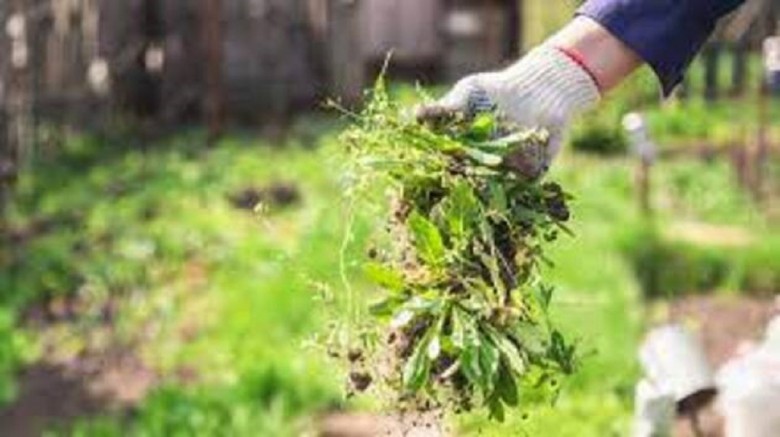
Although this method is convenient and time-saving, especially for paved areas, where crack scrapers can't reach, it needs to be done more frequently. Boiling water has a similar effect and penetrates slightly deeper than the heat shock.
Fertilizer to the Rescue
Yes, this point is serious. Fertilizer can actually help fight weeds - particularly in the lawn. This is especially true when it comes to combating clover in the grass. As a nitrogen fixer, clover doesn't rely heavily on soil nutrients. Thanks to special bacteria on its roots, it can obtain nitrogen from the air.
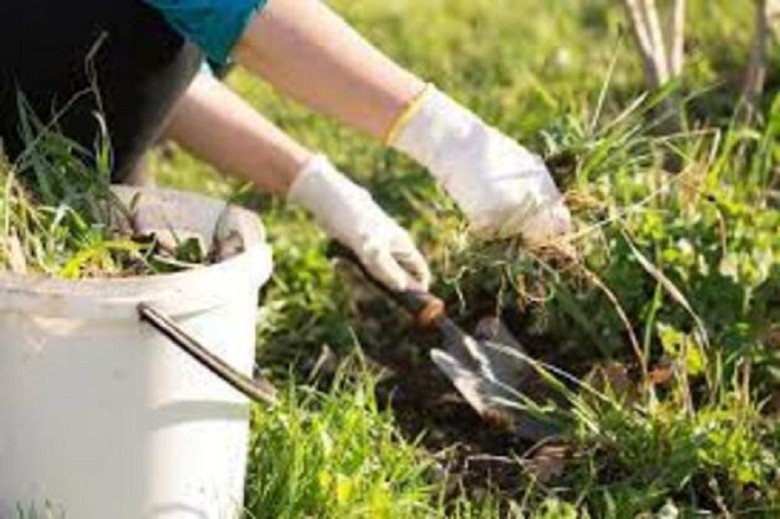
By fertilizing the lawn and keeping it at a height of about four centimeters, the vigorous grass blades will crowd out the clover. This also applies to other lawn weeds. It's a convenient method that naturally occurs while fertilizing the lawn.
Prevention is Key
In addition, there are tricks to prevent future weed infestations altogether. When constructing your terrace, remember this: large slabs have fewer gaps, which means fewer opportunities for weeds to establish themselves. This translates to less work for you.

Additionally, you should use jointing compounds for your terrace, paths, or driveway. This helps keep your terrace weed-free. You can find such products at a hardware store, for example.
Harnessing the Power of Weeds
Weeds can be annoying, but some of them actually have benefits - who would have thought? Some weeds have medicinal properties, while others can even be consumed and used in the kitchen.
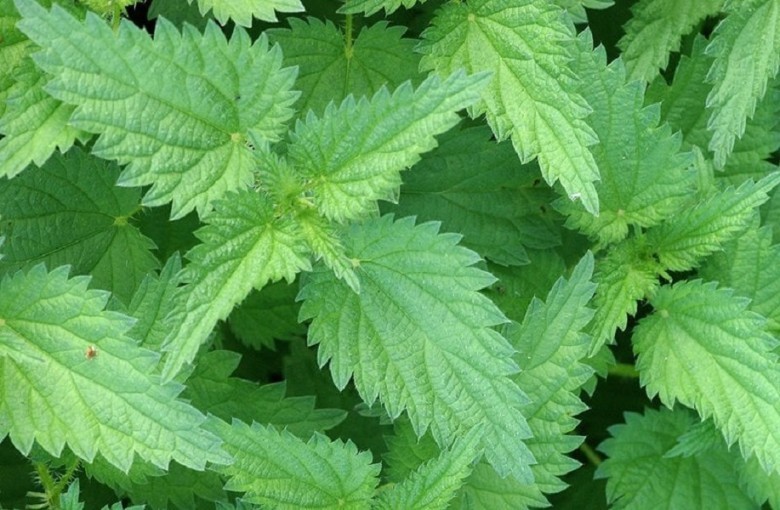
For example, stinging nettle can be used to prepare nettle liquid manure, which can be used as a natural fertilizer for various vegetable plants - an organic way of fertilizing without chemicals.
Let's Get Started!
Simply fill a plastic bucket with freshly cut stinging nettle plants (the whole plant except for the flowers can be used) and fill it with water. Place a grid or wire mesh on top (to prevent animals from falling in) and stir daily until fermentation begins.
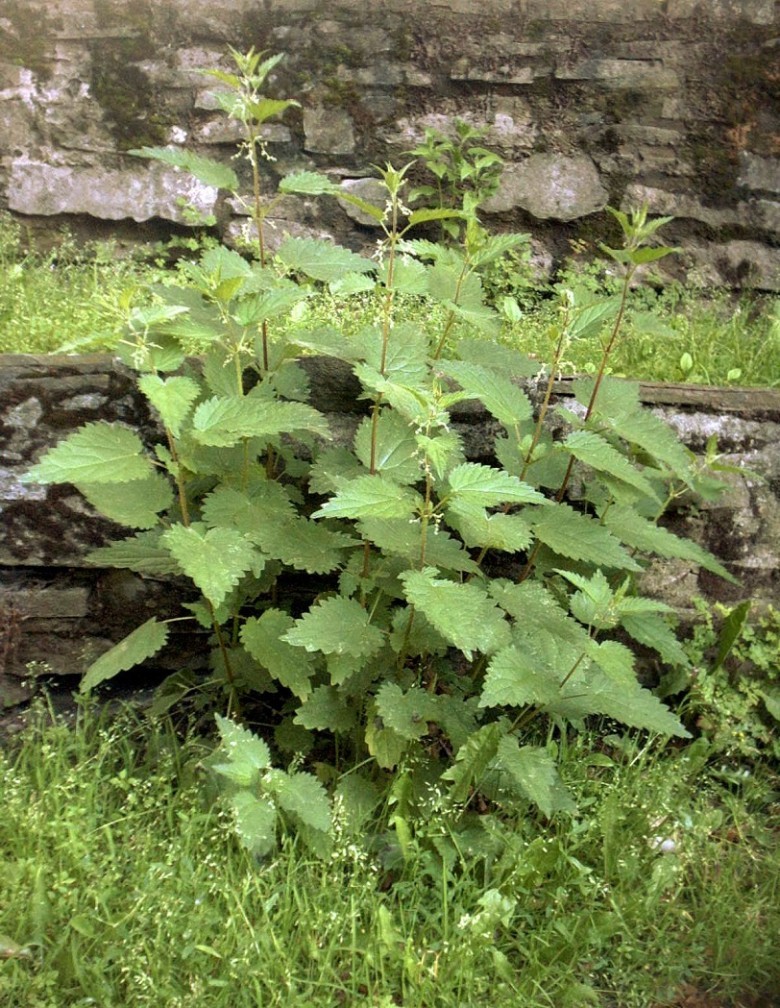
Once foam and bubbles start to form, and the liquid has darkened and no longer produces bubbles, the nettle liquid manure is ready for use as an organic fertilizer. If preparing nettle liquid manure seems too complicated, you can also purchase ready-made nettle infusions.
Other Weeds that can be Utilized
There are other weeds that can be used as well. One well-known example is dandelion. Dandelion is often used in salads or can be made into dandelion syrup, which you can easily prepare yourself.
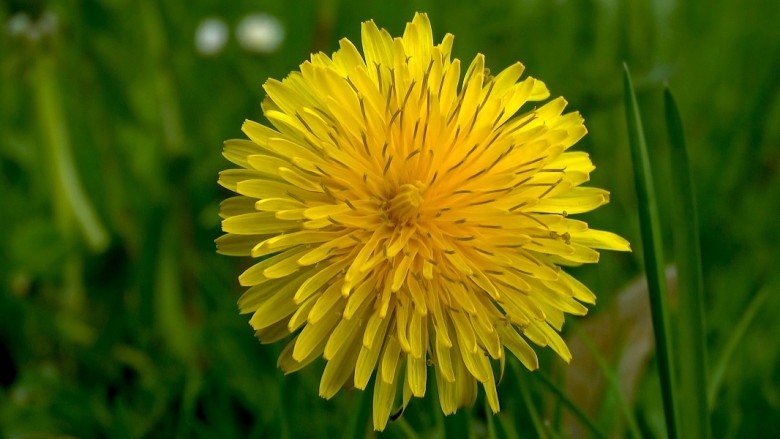
Or have you ever treated an insect bite with a crushed leaf of plantain? The horsetail infusion is also a traditional plant strengthening preparation that can keep pests like aphids and powdery mildew away from your plants.
Plant Pests
If you don't have to deal with weeds, you might encounter other problems such as plant pests. Aphids, mites, vine weevils - let's be honest, no one wants these guests in their garden. Nobody really needs garden pests. To prevent pest infestations from occurring in the first place, you can take some precautions. Prevention is the key.
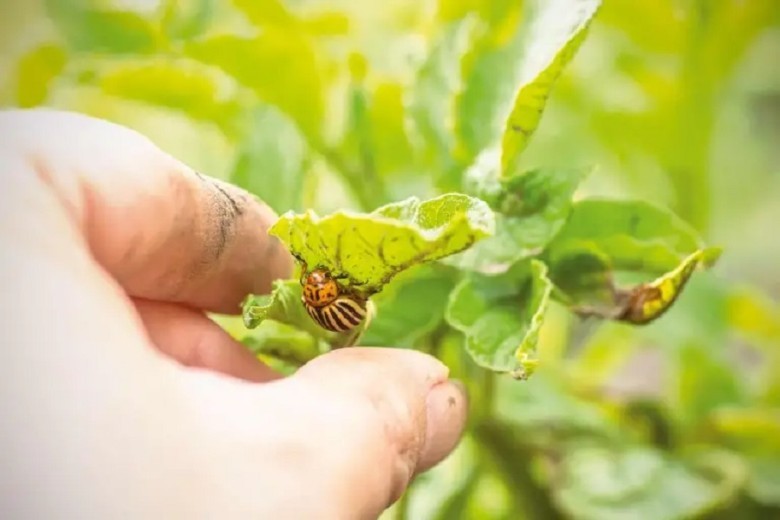
Buy only strong and healthy plants that are especially robust. Some species are simply more resistant to pests than others. Use only high-quality seeds, preferably with disease resistance. Remember to prepare and work the soil properly. For example, incorporate a soil activator. It activates the soil ecosystem and increases the number of microorganisms, which helps prevent plant pests.
More Tips
Pay attention to the soil condition and location, as each plant has different requirements. Always plant and sow with enough distance so that the plant has enough space to grow. Fertilize and care for your plants according to their needs.
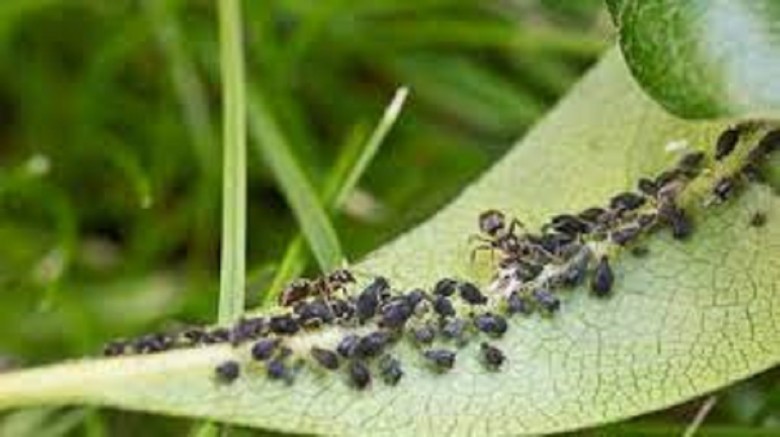
Excessive fertilization makes plants more vulnerable, while too much or too little water can cause the plant to wither. In your vegetable garden, keep an eye on crop rotation and plant associations. Promote the settlement of beneficial insects by creating ideal conditions for your plants. Always prioritize hygiene and properly remove green waste, harvested remains, etc.
Identifying Pests
Holes in the leaves, dull plants, leaf loss - pest infestations are relatively easy to identify. The question then becomes: Which pest is it? Only when you know who is bothering your plant can you take the appropriate measures.
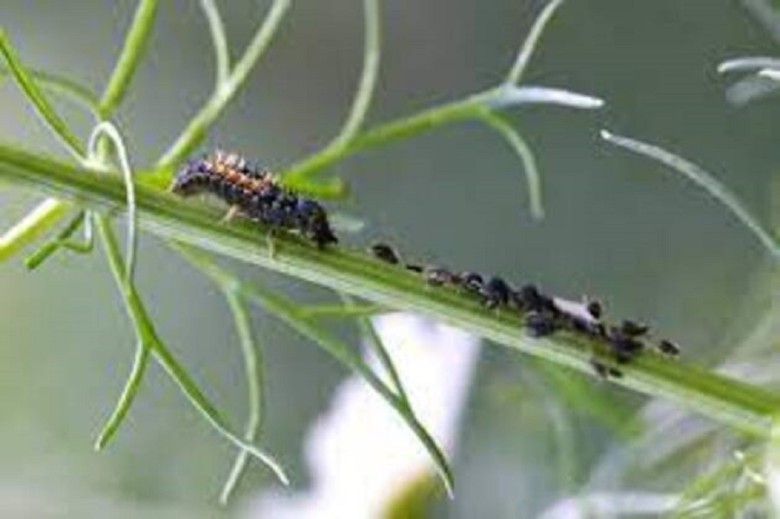
We'll show you which symptoms can indicate which pests so that you'll be prepared for when the situation arises. Holes in the leaves of your plant can be caused by several culprits. To identify the pests, you need to examine the chewed areas more closely.
Holes in the Leaves
Bay-shaped holes indicate vine weevils. Vine weevils are nocturnal pests and unfortunately quite persistent. They particularly like to infest roses, rhododendrons, laurel, boxwood, strawberries, clematis, and various perennials. If relatively large pieces of the leaves are missing, it is likely that snails or caterpillars have been at work. The advantage of these pests is that they are large enough to be quickly spotted.

The box tree moth eats the outer leaves first and then works its way inward. The box tree moth is a caterpillar that can cause serious damage to your boxwood, as the name suggests. The Colorado potato beetle is feared by all vegetable farmers. It causes holes in the leaves or notches on the leaf edges. If it has been feasting on your potato plant for a while, only the thicker leaf veins will remain.
Curling Leaves and Leaf Loss
Equally sad sights are curled leaves or, in the worst case, many leaves that collect on the ground. Now you must look closer to identify the pests, as they are often tiny troublemakers.
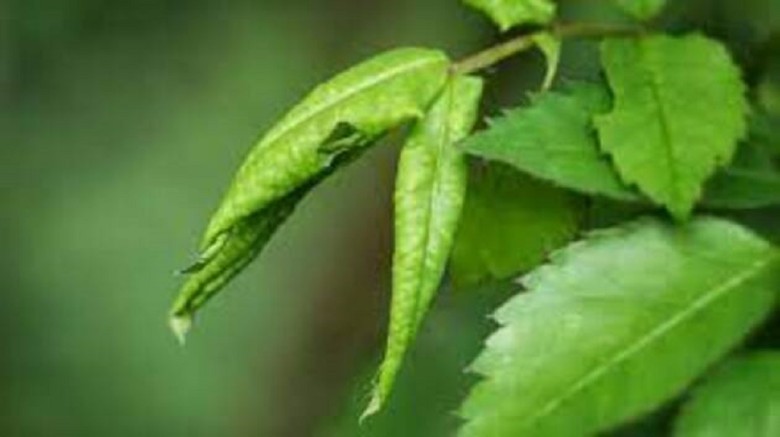
With a fairly high degree of certainty, scale insects or mealybugs are responsible for the distorted leaves. Turn over the leaves and check the underside, as that's where the pests reside. Scale insects and mealybugs are particularly fond of hydrangeas, fruit trees, or citrus plants. If your cherry tree is affected, the likely culprit is the black cherry aphid.
Dull, Wilted Plants
Your plant stands before you weak and lifeless. Dull, wilted leaves, but no visible pests in sight? Then it's likely that the pests have been attacking the roots of your plant. If you discover shallow, elongated mounds around your plant, a mole is likely to blame.
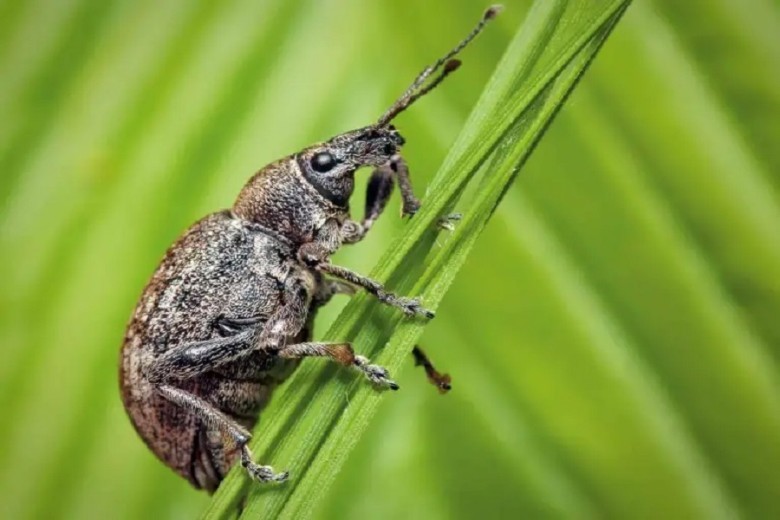
Tulip bulbs and vegetables like celery or carrots are not safe from them. However, the larvae of vine weevils may also be responsible for the wilting plant.
Colorless Leaves
Now let's talk about pests that leave the leaves of your plant colorless or pale. Especially with young garden plants, it could be an infestation of spider mites. You can identify spider mites by the fine web they weave around the leaves.
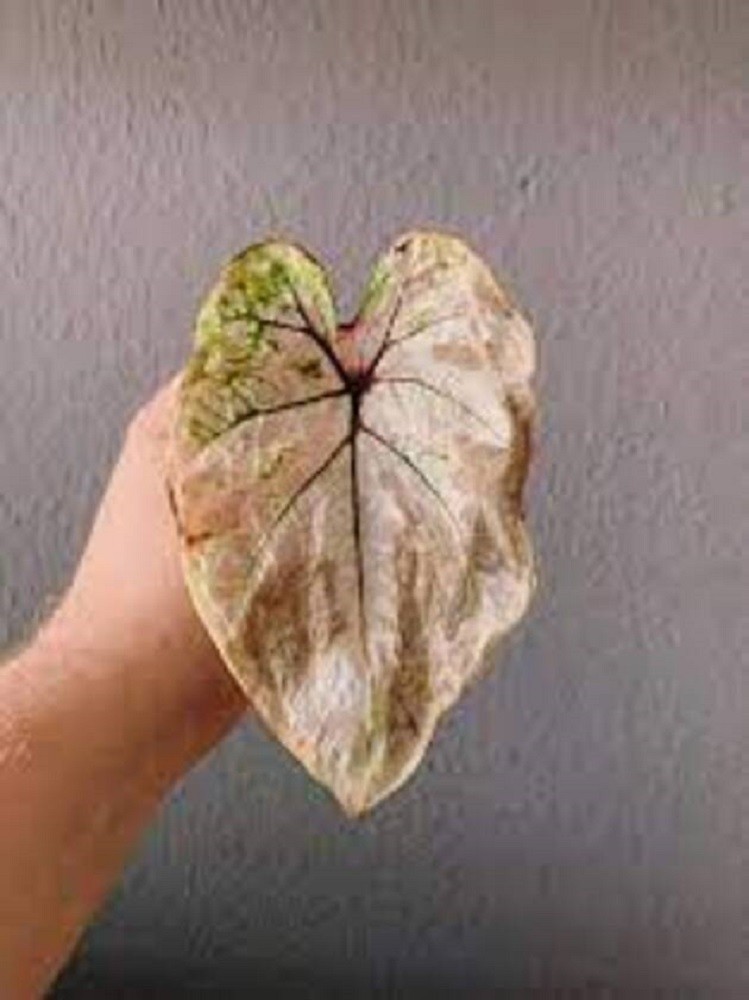
The larvae of the leaf miner moth essentially create tunnels in the leaves, leaving them pale or, in the worst case, only a skeleton. In fruit trees, colorless leaves can also indicate the larvae of the cherry sawfly. The larvae look a bit like small slugs.
Naturally Combatting Pests
You can combat pests in your garden naturally. For example, there are beneficial insects that can help control pests. You can also use yellow sticky traps or tree bands with adhesive. Additionally, there are many home remedies you can use against pests, such as soap solution.
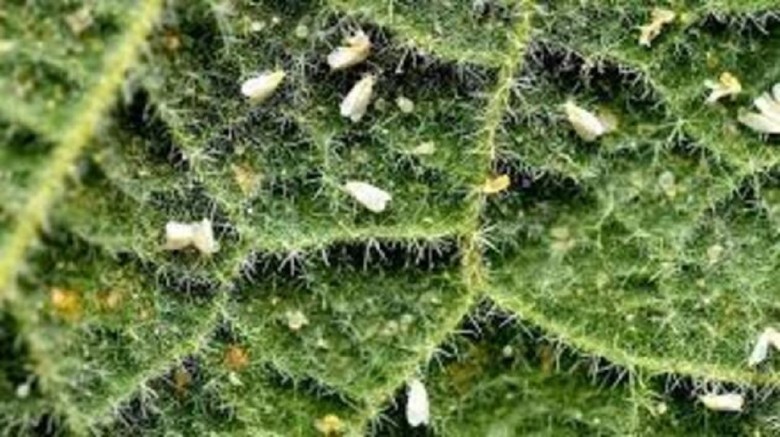
Snails or slugs in your garden beds can be a nightmare. There are several ways to keep them under control. The most effective method against snails is to manually collect them with gloves and a container in the twilight.
Combatting Snails
A simple home remedy against slugs is sawdust. Spread sawdust around the bed as slugs are reluctant to cross this barrier. Furry leaf plants like stonecrop work just as well.
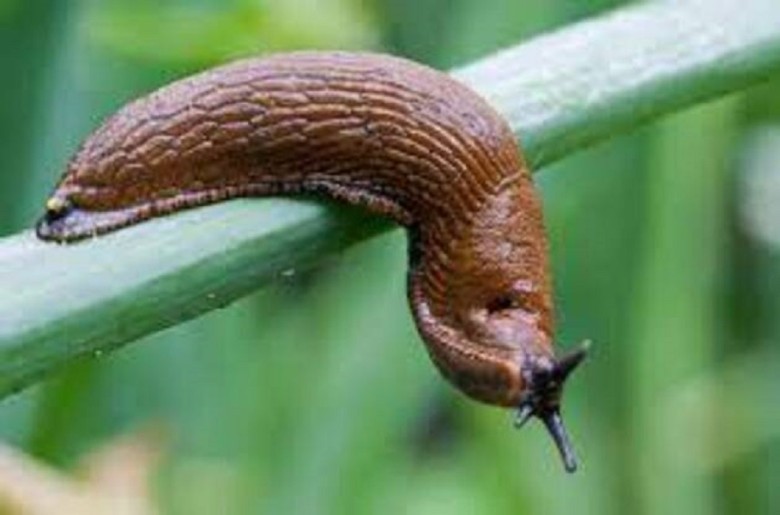
When planted around the bed, they create a natural barrier. Plant vegetables in raised beds to prevent slugs from reaching them. A slug fence can also prevent slugs from visiting your beds.
Combatting Aphids
Start by spraying the affected plant with a strong stream of water. If there are individual leaves or shoot tips heavily infested with aphids, prune them and dispose of them in the trash. For a mild aphid infestation, you can try a simple home remedy: mix 1 liter of water with 2 teaspoons of liquid soap, pour it into a spray bottle, and spray the plant with it.
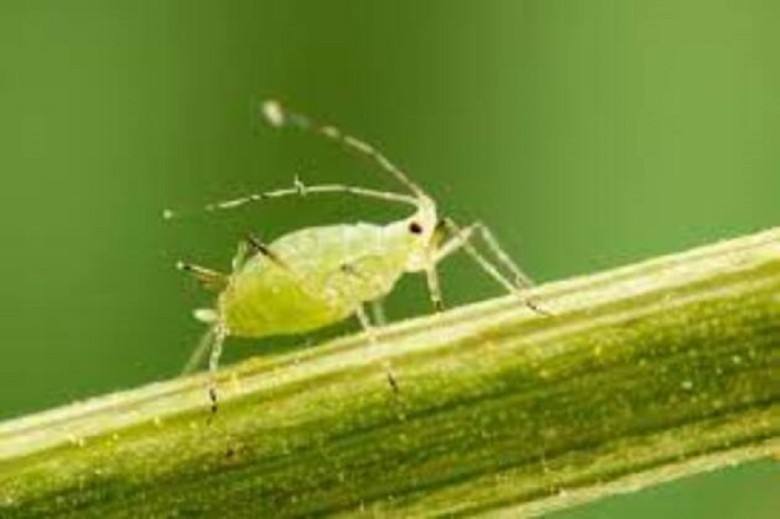
To combat aphids, you can introduce beneficial insects such as ladybugs, green lacewings, or parasitic wasps. Create an insect-friendly garden, and the beneficial insects will come naturally. If aphids are particularly stubborn, you can also use neem oil.
Combatting Vine Weevils
Unfortunately, when it comes to adult vine weevils, you have no choice but to manually collect them from your plants. Go to your garden at night with a flashlight. Tip: Place a flower pot filled with wood shavings under the affected plants.
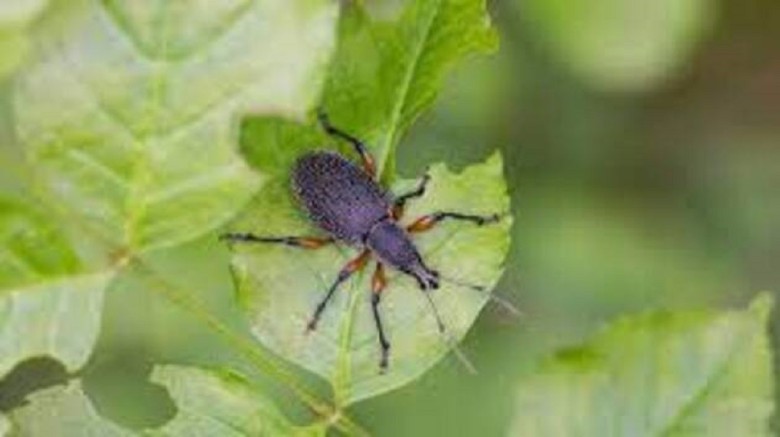
During the day, the vine weevils will use this pot as a hiding spot, making it easier for you to collect them. You will need to use nematodes to combat the larvae. Nematodes are small roundworms that deposit bacteria in the larvae, killing them within a few days.
Combatting Box Tree Moths
Regularly inspect your boxwood trees, as the box tree moth develops several generations throughout the year. Gently bend the branches apart and look inside the plant. The caterpillars eat their way from the inside out.

If you only have a few boxwood trees and a low infestation, you can manually collect the caterpillars or cut out the affected parts with gardening shears. All you need is an empty container and gloves if necessary.
Strengthening Plants!
In addition to natural pest control methods such as beneficial insects or traps, strengthening your plants is an important aspect in combating pests in your garden. For example, there are plant strengtheners with effective microorganisms, which contain a mixture of lactic acid bacteria (Lactobacillus casei, Lactobacillus plantarum), photosynthetic bacteria (Rhodopseudomonas palustris), and yeast (Saccharomyces cerevisiae).

The plant strengthener ensures that all nutrients in the soil are made available to the plant and converted into nutrient salts. But that's not all: the plant strengthener activates the soil life, including earthworms. It promotes germination, root formation, flowering, fruit formation, and ripening of plants, and accelerates composting.















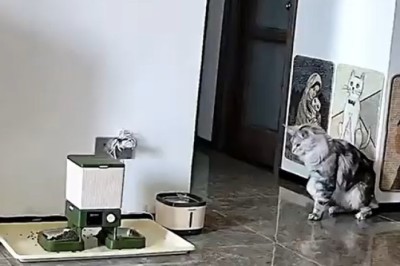




Comments
0 comment